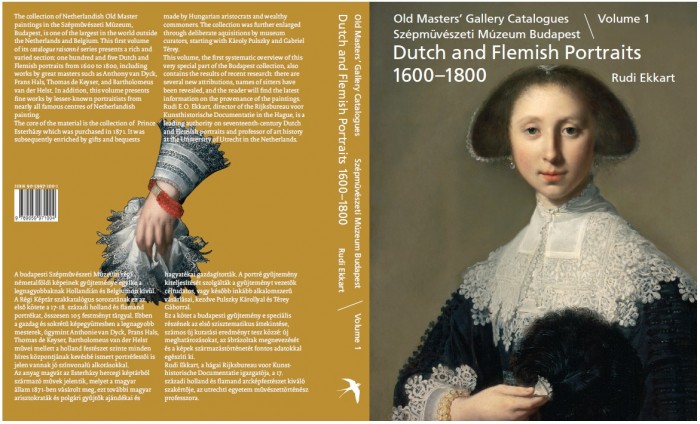On Tuesday 20 December the Szépművészeti Múzeum in Budapest will present two new collection catalogues at 15.00 o’clock in the Baroque hall of the museum. The catalogues cover the museum’s Dutch and Flemish portraits and still lifes.
Dutch and Flemish Painting: Portraits 1600-1800
Rudi Ekkart
Volume 1 of Old Masters’ Gallery Catalogues, Szépmûvészeti Múzeum Budapest
304 pp., 22 x 28 cm, bound, ca. 150 ill. mostly in color
Leiden (Primavera) 2011
ISBN 978-90-5997-100-4
The collection of Dutch Old Master paintings in the Szépművészeti Múzeum, Budapest, is one of the largest in the world outside the Netherlands and Belgium. This first volume of its catalogue raisonné series discusses one hundred and five Dutch and Flemish portraits from 1600 to 1800, an abundant and varied section of the collection. Represented are such great masters like Anthony van Dyck, Frans Hals, Thomas de Keyser, Bartholomeus van der Helst, and it includes fine works by leading portraitists from nearly all the famous centres of Dutch painting. The core of this material comes from the Prince Esterházy collection purchased in 1871, which was subsequently enriched by gifts and bequests of further Hungarian aristocrats and bourgeois collectors. Until recently the collection of portraits has been augmented through resolute or occasional acquisitions by gallery directors, starting with Károly Pulszky, Gabriel Térey and others. This volume is the first systematic overview of that special part of the Budapest collection, containing new achievements of research: several new attributions, names of sitters, and unknown data to the provenance of the paintings. The text is in English and Hungarian.
Rudi E.O. Ekkart, director of the Rijksbureau voor Kunsthistorische Documentatie in the Hague, is the leading authority on seventeenth-century Dutch and Flemish portraits, author of scholarly catalogues and co-curator of special exhibitions. He is professor of art history at the Utrecht University.
Dutch and Flemish Paintings: Still Lifes 1600-1800
Ildikó Ember
Volume 2 of Old Masters’ Gallery Catalogues, Szépmûvészeti Múzeum Budapest
304 pp., 22 x 28 cm, bound, ca. 200 ill. mostly in colour
Leiden (Primavera) 2011
ISBN 978-90-5997-101-1
Today still life is popular with both museum visitors and art collectors. After a period of relative neglect research on this subject has intensified since the 1960s. The genre constitutes a significant section of the Dutch and Flemish collection of the Old Masters’ Gallery of the Szépművészeti Múzeum in Budapest. The collection includes all subcategories: flower, fruit and banquet pieces, hunting trophies, kitchen and pantry interiors, and pictures of live animals, and presents an excellent overview of the development of still life painting. Among the ninety-five works discussed in this volume are masterpieces by prominent still life specialists such as Jan Fijt, Jan Davidsz. de Heem, Pieter Claesz., Willem Claesz. Heda, Willem Kalf, Abraham van Beijeren, and Willem van Aelst. as well as fine works by lesser-known masters, including Andries Benedetti, Frans Ryckhals, Jan Treck, and Jan van der Heyden. Several of these ninety-five paintings come from the collections formed by Hungarian aristocrats during the eighteenth and nineteenth centuries; the Esterházy collection, bought by the Hungarian State in 1871, for instance, included 12 excellent pieces. The main part of the still lifes in the Budapest Museum, however, has been acquired thanks to the decisive attitude of museum curators. Ildikó Ember, chief curator of the Old Masters’ Gallery, is specialized in seventeenth-century Dutch and Flemish painting. She is the author and editor of several collection and exhibition catalogues. and was the organizer of a special exhibition devoted to the Budapest collection that toured the US in 1989–90. She had been publishing on various types of still life since the 1970s; this volume presents the latest results of her research. Three entries were written by Fred G. Meijer, an acclaimed scholar of still life painting, who here publishes his new findings on these pieces. The text is in English and Hungarian.


